
How can brands use music to overcome generational tensions?
Joanna Barnett, Strategy Director at Truant, on the power of music to bring people closer together and broaden a brand’s appeal.
The future of entertainment

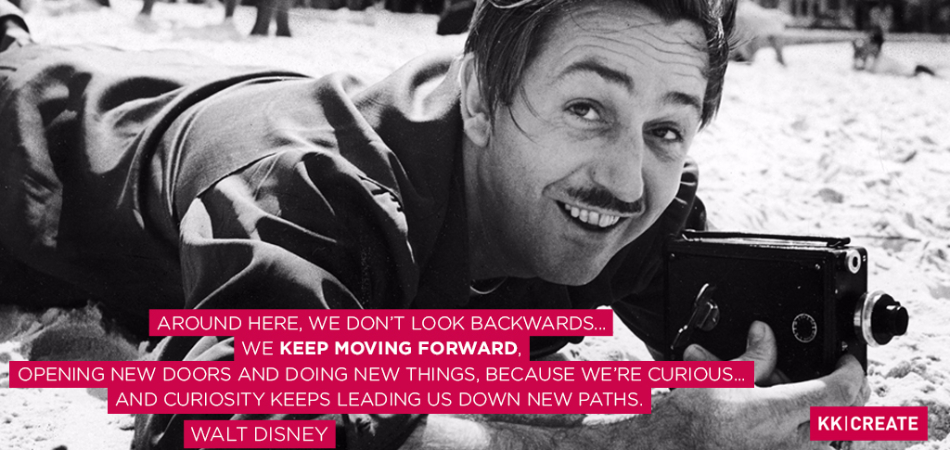
Everything changed when Red Bull flew pilot Felix Baumgartner 39km into the stratosphere over New Mexico, and he jumped. When he hit the floor the worlds of brand and entertainment collided, and all marketers have since been trying to reach the same dizzying heights (metaphorically speaking).
Our social feeds are full of make-up tutorials, cocktail lessons, DIY tips and 20 second recipes; whilst these offer some entertainment value, where’s the excitement, the boundary pushing, the risk of death? Okay, so risk of death is optional, but where’s the theatre? As brands become publishers, they need to really resonate with customers or risk getting lost in the noise.
In June 2015 Alex Da Kid announced a joint venture with WPP called KIDinaKORNERCreate. Alex Da Kid is a multi-award-winning producer, songwriter, director and founder/CEO of KIDinaKORNER, one of Interscope’s most successful emerging record labels. Since its creation in 2011 his artists have been collaborating with brands like Jeep, Target and Budweiser.
The partnership with WPP is a new model “bringing music to the forefront of every level of the creative process; planning, strategy and execution,” said Da Kid. “This approach will create more substantial and meaningful engagement with the audience.”
Music plays an important role in people’s lives, connecting them to a moment that is uniquely personal. In a culture where authenticity, creativity and cultural relevance is everything, it will be interesting to see what impact KIDinaKORNERCreate has on the creativity of the brand and artist, and how this plays out to an expectant audience.
As the role of brand, producer and agency blurs, what will the entertainment company of the future look like? How will this impact on the future of music, film and entertainment?
Read on for brands who have made a successful leap into the entertainment space.
With fizzy drink consumption down and so many brands competing in the music space, Pepsi needed to do something revolutionary to reinvigorate their music legacy.
The solution was an authentic role for Pepsi told through the hit US show Empire. Brand, agency and producers worked closely together to create an idea that embed Pepsi deep into the storyline; completely blurring the lines between reality and entertainment.
In the show, leading character Jamal Lyon landed a recording deal with Pepsi to create an original song for their next ad campaign. The script followed the characters in discussion with the Pepsi team, recording ideas and shooting the final ad.
In real-life Pepsi partnered with actor Jussie Smollett to keep the story going, Smollett showing his support for Pepsi at awards ceremonies and on chat shows. For ultimate authenticity Lee Daniels, Empire’s creator, played himself in the show, directing both Jamal and Jesse in the spot.
In the season finale the Pepsi commercial was previewed, cutting directly to the real-life ad break, which seamlessly aired on Fox as if it was part of the show.
Agency: OMD, New York
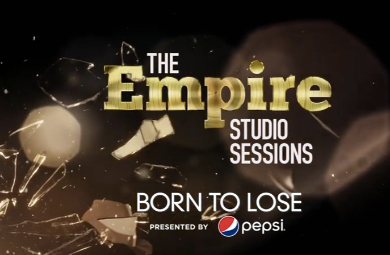
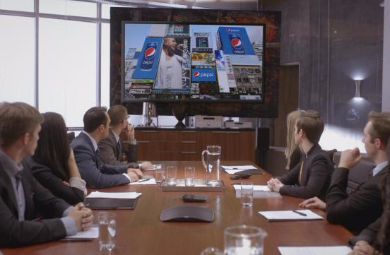
Research showed that Israelis love to go to IKEA for home accessories, but when it comes to designing a house the value furniture is considered less desirable than competing brands. To prove otherwise they decided to take over the most desirable and watched house in Israel, the Big Brother house. Because there can be no branding or logos, IKEA needed a smart idea - this year’s celebrity contenders had to assemble all the furniture themselves. So for the first three days all conversation revolved around IKEA furniture. The virtual 360 tour of the house received more than 250,000 clicks and the Big Brother furniture collection sold out almost immediately.
Agency: McCann, Tel Aviv
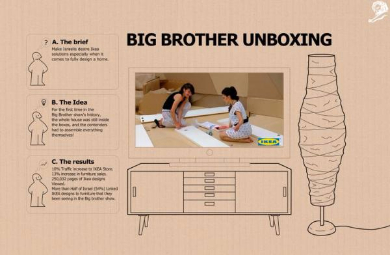
For Target to break through at the Grammy’s, they did something that had never been done before. Partnering with Gwen Stefani they created the world’s first music video filmed live on national television. The full four minute ad break was transformed into a live spectacle, with seven wardrobe changes, 30 dancers and 10 theatrical sets, all in front of 25 million viewers. A behind the scenes experience was broadcast on live social feeds including Facebook Live, Periscope and Snapchat. The commercial was one of the most memorable moments of the Grammy’s, and successfully ingrained Target into pop culture and music history.
Agency: Deutsch, LA
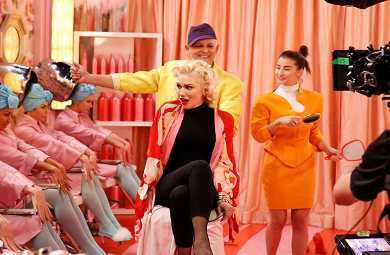
Margot vs. Lily is Nike’s first scripted YouTube series, written by the makers of indie film Me and Earl and the Dying Girl. Over eight episodes, viewers can follow the story of two sisters, Lily - a budding YouTube workout star, and Margot - a slacker who has recently lost her job in social media. Despite her growing audience of fans, Lily has no real friends. Margot has plenty of friends but doesn't exercise and envies Lily's disciplined healthy lifestyle. So, they hatch a plan: Margot launches her own online workout show, and they begin to keep score on followers. The episodes point to nike.com/betterforit, which features vlogs highlighting specific Nike+ workouts seen in the show. The goal is to get women everywhere to ignite their own ‘Better for It’ journeys using Nike products and services.
Agency: Wieden+Kennedy, Portland
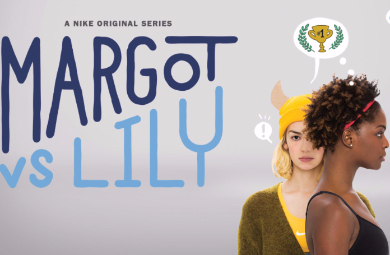
Looks like you need to create a Creativebrief account to perform this action.
Create account Sign inLooks like you need to create a Creativebrief account to perform this action.
Create account Sign in